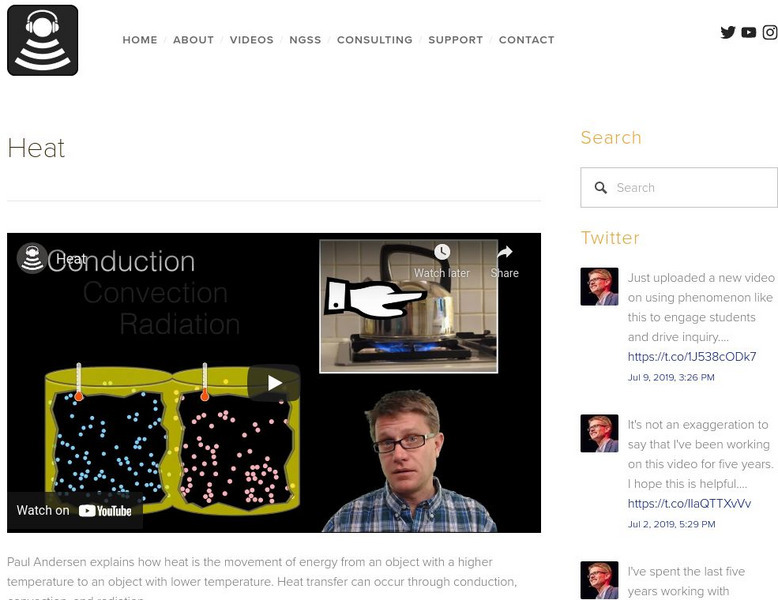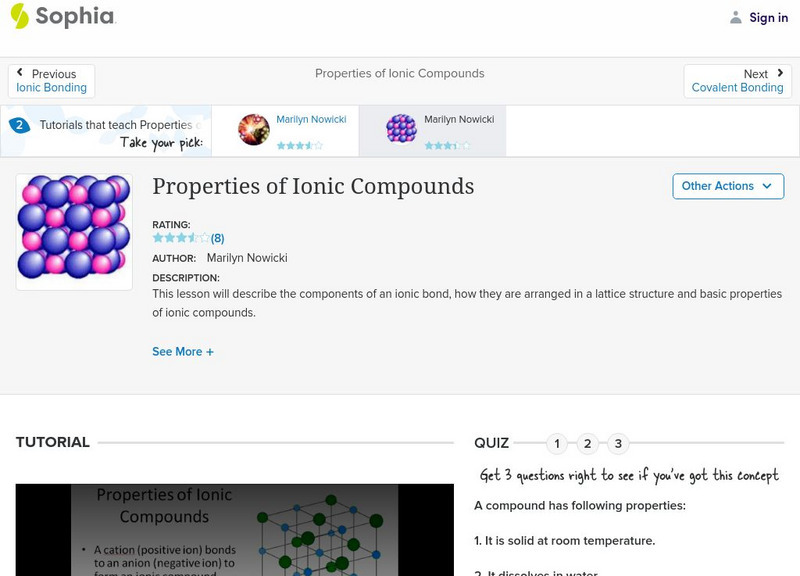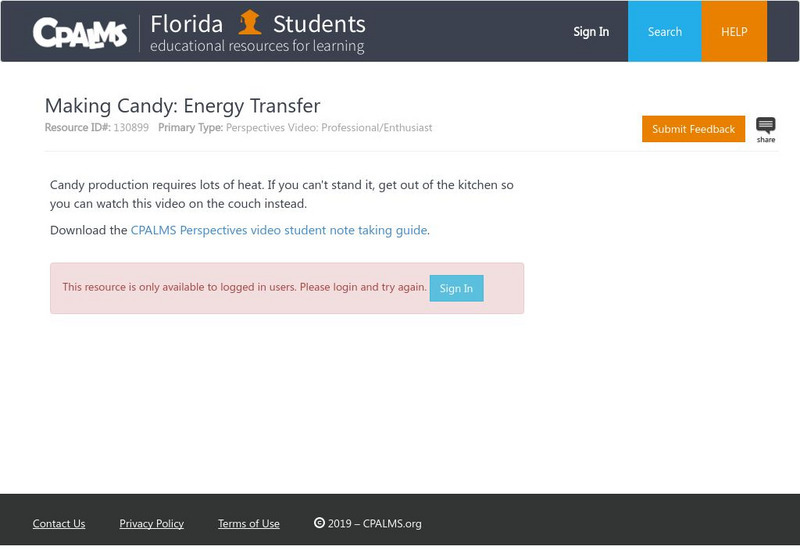Crash Course
Heat Transfer: Crash Course Engineering #14
Heat up your lesson with a useful resource. An informative video describes the three main types of heat transfer: conduction, radiation, and convection. It explains how these methods of heat transfer should be taken in consideration when...
American Chemical Society
What's in your Smartphone?
Your cell phone contains many elements you may not have even heard of! Explore the science of the smartphone with a lesson from the Reactions playlist. The instructor explains the location and purpose of the many different elements that...
Bozeman Science
PS3B - Conservation of Energy and Energy Transfer
Fan the flames of inspiration by teaching energy conservation! The video's narrator explains the core ideas of PS3B, Conservation of Energy and Energy Transfer. Discover what pupils throughout the grade levels should know about...
Crash Course
The Physics of Heat: Crash Course Physics #22
Compare and contrast the physics of heat flow with a well-designed video lesson. The 22nd installment of the Crash Course series is an overview of the physics of heat. After beginning with a discussion of thermal energy and heat, the...
SciShow
What Happens if Your Body is Exposed to the Vacuum of Space?
What might happen if a body encounters the vacuum of space? Through multiple experiments and a couple of real-life accidents, we know more about how a person would die — and it doesn't look nearly as dramatic as science fiction...
Berkeley University of California
Weak Acid - Weak Base
How do you tell a plumber from a chemist? Ask them to pronounce unionized. The first video in the set demonstrates the pH and conduction of ions based on their acid and base strengths. The next two videos are quizzes that apply the...
DoodleScience
Heat Transfer - Conduction and Convection
Use science to explain why sitting on a metal bench on a cold day isn't a good idea. The instructor describes conduction and convection through drawings and animations. Learners understand how conduction and convection transfer heat...
DoodleScience
Heat and Thermodynamics
Looking for a review that won't take up an entire class period? Here is a video that provides a quick review of heat and thermodynamics. It covers more than nine topics in less than five minutes.
PBS
Pbs Learning Media: Cooking Cookies With Solar Power
In this video segment adapted from ZOOM, two solar cookers are tested against a control to see which can cook a "s'more" faster. [3:11]
PBS
Pbs Learning Media: Students Measure Changes in Lake Ice and Snow
In this video adapted from KUAC-TV and the Geophysical Institute at the University of Alaska, Fairbanks, students provide field measurements that researchers need in order to understand how lakes in Alaska are changing as a result of...
Bozeman Science
Bozeman Science: Heating
In the following video Paul Andersen explains how heating is the transfer of energy (heat) from a warmer object to a cooler object. Heat can be transferred through conduction, convection and radiation. At the microscopic level conduction...
Bozeman Science
Bozeman Science: Heat
In the following video Paul Andersen explains how heat is the movement of energy from an object with a higher temperature to an object with lower temperature. Heat transfer can occur through conduction, convection, and radiation. [4:10]
PBS
Pbs: Nova: Cooking With Bill Nye
Join Bill Nye in his short demonstration showing conservation of thermal energy. The famous television scientist explains why this simple, but important scientific concept is relevant. [2:26]
Wisc-Online
Wisc Online: Heat Transfer: Convection, Conduction, Radiation
An interactive lesson illustrating the three methods of heat transfer: convection, conduction, and radiation. See short animations, and read about examples of each method.
Bozeman Science
Bozeman Science: Conservation of Energy and Energy Transfer
Paul Andersen explains how energy is conserved within a system. In both macroscopic and microscopic collisions, the amount of energy before the collision is equal to the amount after. He then defines heat as energy transfer between...
Curated Video
Math Tutor Dvd: Balloon in a Candle Flame Science Experiment
In this cool science experiment, you will see how you can put a balloon directly into a candle flame and the balloon will not burst. The power of heat conduction makes this possible. Have fun while learning about heat transfer and energy...
University of Virginia
Uva Virtual Lab: Electrometer
Movement of electricity or heat through an object is conduction. Observe how objects charge through conduction based on the findings of the electrometer.
Khan Academy
Khan Academy: Spout Motor
This video goes inside a simple motor to see the components and learn how a motor works. [3:18]
Sophia Learning
Sophia: Properties of Covalent Compounds: Lesson 2
This lesson will describe the components of a covalent bond and basic properties of molecular compounds. It is 2 of 2 in the series titled "Properties of Covalent Compounds."
Sophia Learning
Sophia: Properties of Covalent Compounds: Lesson 1
This lesson will describe the components of a covalent bond and basic properties of molecular compounds. It is 1 of 2 in the series titled "Properties of Covalent Compounds."
Sophia Learning
Sophia: Properties of Ionic Compounds: Lesson 2
This lesson will describe the components of an ionic bond, how they are arranged in a lattice structure and basic properties of ionic compounds. It is 2 of 2 in the series titled "Properties of Ionic Compounds."
Sophia Learning
Sophia: Properties of Ionic Compounds: Lesson 1
This lesson will describe the components of an ionic bond, how they are arranged in a lattice structure and basic properties of ionic compounds. It is 1 of 2 in the series titled "Properties of Ionic Compounds."
CPALMS
Florida State University Cpalms: Florida Students: Making Candy: Energy Transfer
See how energy transfer is used when making candy. [5:05]
Bozeman Science
Bozeman Science: Thermoregulation
Paul Andersen explains how organisms are able to regulate their internal body temperature (or not). He starts with a brief description conduction, convection, radiation and metabolism. He contrasts ectotherms and endotherms. He also...






















